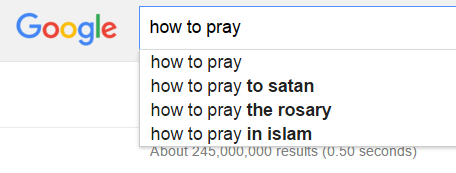Towards a Marxist Cyber Theology of Chaos Magic
Angel Ashley

In recent years, Chaos Magic “sigils” have circulated on the internet as memes for magical intents, with as diverse purposes as supporting alternative gender and sexual identities1 and catching pokemon2, in the process gaining audiences on websites like Tumblr. Artist Eliza Gauger’s project Problem Glyphs began when an offer to create sigils based on user submitted problems garnered an overwhelming response. Gauger indicates she believes Chaos Magic is part of the “generational ‘zeitgeist’” due to its appeal to millennials struggling with poverty and the effects of visible queerness3. In queer witchcraft groups on Facebook, Chaos Magic techniques like sigils are mentioned almost as often as crystals and tarot cards. Like Gauger, trend forecasting collective K-HOLE (of “normcore” fame) predicts a zeitgeist moment4 for Chaos Magic. Describing the ideology of Chaos Magic, K-HOLE writes5, “Belief becomes a technology that creates change" and “Chaos Magic creates realities which are temporary and subjective. It’s not a tool for changing others—it’s a tool for changing yourself. You opt into whatever belief system you think will help you reach your intended goals”. This meta-paradigmatic approach to occultism is extremely pop culture friendly6.

In earlier stages of the technological development of the information economy, occult ideology was disseminated in different forms: Ancient Mystical Order Rosæ Crucis, a Rosicrucian order, began selling correspondence courses and initiations via mail order in 19157; in the 1980s, Psychic TV began using experimental music subculture to proliferate Thee Temple ov Psychick Youth, a Chaos Magic order which required a sigil anointed with sexual fluids, blood, and saliva be mailed to them as an initiation8. In the current information economy, methods of disseminating ideology and building community are relatively decentralized, memetic, even sometimes algorithmically automated. Few spiritual ideologies are as well-adapted to late capitalism as Chaos Magic, which traffics in the postmodern power of pure signifiers. As a structure of advanced imperialism it claims to distill all the world’s esoteric traditions into the singular abstract technology of belief. It’s an ideology that lends spiritual meaning to mass media, brands, and viral content as “egregores”9, powered by mass affect, as much as Renaissance Neoplatonism lent spiritual meaning to the social structure of feudalism. It claims to be an ideologically neutral technology, but it never interrogates the ideological ramifications of the concept of “ideologically neutral technology”.

Chaos Magic began in the late 1970s with the publication of magazine The New Equinox and subsequent establishment of magical order Illuminates of Thanateros by Ray Sherwin and Peter J. Carroll10. As an occult movement, Chaos Magic attempts to remove spiritual experience from ideology and treats it as a technology which is religiously, politically, and ethically neutral—to paraphrase Carroll, freeing magic from occultism11. The “technology” of Chaos Magic is the method of obtaining altered states of consciousness (“gnosis”) and crafting a symbolic language in order to arrange the subject’s visionary world12. Carroll writes, “It would be inappropriate for a Chaos Magic text to prescribe any particular beliefs or dogmas, except that magic works if certain general principles are followed”13. The project of separating the Western esoteric tradition from its ideological, religious paradigms (i.e., Christianity, synthesized with Kabbalah, and interpreted through the lens of Renaissance Neoplatonism and Hermeticism) began with modernity. The religious test of Freemasonry, amidst Enlightenment era secularism was at most belief in a generic supreme being14. The Hermetic Order of The Golden Dawn, an influential Victorian occult society, was founded by members of a Masonic Rosicrucian order (Societas Rosicruciana in Anglia). The Golden Dawn’s policy was similar Anglo-American Freemasonry’s: “Belief in One God necessary. No other restrictions.”15

source: http://the-equinox.org
No one from the milieu of Victorian Rosicrucianism did as much to emancipate esotericism from its religious context as former Golden Dawn member Aleister Crowley. Referencing the Golden Dawn’s Christological use of ancient Egyptian mythos16, Crowley proclaimed an apocalyptic end to the “Aeon of Osiris” heralding the obsolescence of Christian ethics and metaphysics in the occult1718. The slogan of The Equinox (journal of Crowley’s Golden Dawn successor order, A∴A∴) evokes Max Horkheimer and Theodor W. Adorno’s Dialectic of Enlightenment in this “New Aeon” approach to esotericism. It reads: “The Method of Science, The Aim of Religion”19. Crowley attempted to incorporate the inner, subjective occult experience into a sort of Enlightenment era consensus about reality20, while generally avoiding making paranormal claims per se21. However, Crowley’s Counter-Enlightenment tendency only partially removes a faith in magic from the medieval, esoteric, Rosicrucian ideological context it inherits. The “will” mentioned in Crowley’s law of the New Aeon–“Do what thou wilt shall be the whole of the Law”– is discerned through mystic communion with one’s Holy Guardian Angel22, through an operation derived from a 14th or 15th century grimoire (The Book of the Sacred Magic of Abramelin the Mage23). Peter J. Carroll writes of a manual outlining an array of general magical techniques without any specified goals, “It is a definitive replacement for the Sacred Magic of Abramelin the Mage, which system has become obsolete due to its monotheist transcendentalism”24. Chaos Magic is not “The Method of Science; The Aim of Religion,” because any aim at all will do.

Flowchart image25
“Each group may be considered as the “Illuminati” of its era in the sense that it possessed the keys to the next advance of enlightenment. This, I believe, is all the Illuminati actually consists of, and I like to think that Chaos Magic is the obvious esoteric current for the postmodern era.” — Peter J. Carroll
From a historical materialist perspective, spiritual ideas and communities develop not as progressive stages of enlightenment, but as ideological structures of the political economy, reflecting conflicting class interests. As Marx wrote in A Contribution to the Critique of Political Economy, “The mode of production of material life conditions the general process of social, political, and intellectual life. It is not the consciousness of men that determines their existence, but their social existence that determines their consciousness.” Chaos Magic counts the various formal esoteric systems established in Europe and Asia from the Medieval period until present (e.g., Rosicrucianism, Kabbalah, Tantra, Sufism, Taoism, et cetera) as well as informal “folk” magical traditions (such as witchcraft) among its inspirations. There are a few defining, cross-cultural, aspects of what constitutes “esotericism”: an emanationist cosmology26 (which following the maxim “as above, so below” functions as a theory of everything); a symbolic language (e.g., iconographic27, alphanumeric28, etc29) for interpreting and/or interacting with cosmological archetypes (e.g., theurgy30, alchemy, astrology, medicine31, textual exegesis32, etc); and is initiatory333435 and/or has restrictions on study or practice36. Nearly all of the world’s major esoteric traditions emerged in their respective cultural contexts during medieval transitions to feudalism37383940. Even the spread of the esoteric Shingon41 and Tendai42 sects in Japan is placed in the Heian period, when the class tensions leading to the establishment of Japanese feudalism developed43.

Cabala: Spiegel der Kunst und Natur, Michelspacher, 1615
That the world’s esoteric movements, as social phenomena, have emerged in otherwise disparate social contexts with the rise of feudal class tensions would indicate that esoteric movements are an ideological structure historically tied to certain feudal class interests. In the context of the European Middle Ages, Silvia Federici claims in Caliban and the Witch (2004) that heresy served as a “protest movement” and “liberation theology”44. Federici goes on to call the Cathars and the Waldenses “the first ‘proletarian international’”45. Federici identifies use of the sacraments to extort money from the peasantry, the threat of excommunication for labor protesters, and the Church’s ideological control over reproductive labor as particular social grievances inspiring participation in heretical movements such as the Cathars46. Though Victorian occultists later drew inspiration from the Albigensians’ gnosticism47, it is not clear that these sects had any direct effect on the esotericism of the European Middle Ages. Federici also argues that in the transition from feudalism to mercantile capitalism, witch hunts were “instrumental to the construction of a new patriarchal order where women’s bodies, their labor, their sexual and reproductive powers were placed under the control of the state and transformed into economic resources”48, noting however that “High Magic”, “the Renaissance magician”, and the Neoplatonists were largely unaffected by these persecutions of witchcraft and heresy49. John Dee, for example, was not burned at the stake for creating the Enochian system50 of angel conjuration, but instead worked as Queen Elizabeth I’s astrologer, advising her in favor of imperial expansion51.

Rosa Celeste, Gustave Doré
It would seem then that despite contemporary association with counter-culture, esotericism did not particularly clash with the interests of feudal powers. Johann Eck implied as much when citing Neoplatonic mystical theologian Pseudo-Dionysius the Areopagite’s Celestial Hierarchy in a defense of the Papacy against Martin Luther at the Leipzig Debate52: “Our hierarchy is religiously arranged in orders which God ordained, and is conformed to the heavenly hierarchies of the saints.” Indeed, a cosmology where absolutely everything is ordained in a complex hierarchy corresponding to every other thing in the universe is compelling when attempting to naturalize a complex social hierarchy.

Much ink has been spilled over Gutenberg’s press–how this revolution in industry impacted European religious development in the Protestant Reformation53. Changes to the economy naturally affect social change which in turn modify human spiritual consciousness. It is well known that in the United States the number of religiously “unaffiliated” persons keeps growing54. What isn’t known is for how many of these people traditional religious institutions are simply an outmoded technology for providing spiritual instruction and community. Doubtless many persons who reblog sigil memes or who are members of Facebook groups like “the Queer Witch Collective” are religiously “unaffiliated”. These are engaging with ideological apparatuses that did not exist and were not possible prior to the advent of new media.

All of the occult movements since modernity are arguably part of the project of resacralizing bourgeois liberal positivism. As Horkheimer and Adorno write, “The more completely the machinery of thought subjugates existence, the more blindly it is satisfied with reproducing it. Enlightenment thereby regresses to the mythology it has never been able to escape.” Chaos Magic, emerging in a vastly different technological and social context than either the mystery cults of late antiquity or the feudal esoteric movements which emerged from them, sublimates the sacramental formula. Word never becomes flesh; the word is encrypted, embedded in digital symbols which conceal its meaning, and broadcast in mass media where it is consecrated by the collective affect it elicits. Federici attributes to medieval folk magic a symbolic power of protest, while simultaneously noting that Hermeticism was tolerated among the elite. Chaos Magic positions itself as heir to both of these lineages. Its ideological flexibility provides an allure to the identities disaffected from institutional spirituality and at the same time it animistically breathes the breath of life into late capitalist mass media and finance55. *~
-
http://thecreatorsproject.vice.com/blog/conjuring-the-internet-art-and-contemporary-magic ↩︎
-
http://www.theguardian.com/fashion/2015/sep/27/chaos-magic-normcore-fashion-trends-eva-wiseman ↩︎
-
http://www.themagicalbuffet.com/Issues/Vol02_Iss13/Article_085.html ↩︎
-
http://www.strangerdimensions.com/2013/03/25/on-egregores/ ↩︎
-
https://en.wikipedia.org/wiki/Illuminates_of_Thanateros#Early ↩︎
-
https://en.wikipedia.org/wiki/Illuminates_of_Thanateros#Relation_to_the_occult_subculture ↩︎
-
https://books.google.com/books?id=_7BmacKsEYoC&pg=PA232#v=onepage&q&f=false ↩︎
-
http://www.chaosmatrix.org/library/chaos/texts/liberkkk.html ↩︎
-
https://en.wikipedia.org/wiki/Freemasonry#Emergence_of_Continental_Freemasonry ↩︎
-
https://books.google.com/books?id=rwzttsI9-NwC&pg=PA31&lpg=PA31#v=onepage&q&f=false ↩︎
-
http://hermetic.com/crowley/the-vision-and-the-voice/aethyr16.html ↩︎
-
https://en.wikipedia.org/wiki/The_Book_of_Abramelin#Abramelin_and_Thelema ↩︎
-
http://www.chaosmatrix.org/library/chaos/texts/liberkkk.html ↩︎
-
https://zalbarath666.files.wordpress.com/2012/07/peter-j-carroll-liber-null-psychonaut.pdf ↩︎
-
http://www.kheper.net/topics/Islamic_esotericism/cosmology.html ↩︎
-
http://www.kheper.net/topics/Islamic_esotericism/latifa.htm ↩︎
-
https://en.wikipedia.org/wiki/Pardes(Jewish_exegesis)#Sod ↩︎
-
http://www.nimatullahi.org/our-order/getting-started/initiation.php ↩︎
-
https://en.wikipedia.org/wiki/Kabbalah#Contemporary_study ↩︎
-
https://en.wikipedia.org/wiki/Kabbalah#Pre-Kabbalistic_schools ↩︎
-
https://en.wikipedia.org/wiki/Sufism#Formalization_of_doctrine ↩︎
-
https://en.wikipedia.org/wiki/Western_esotericism#Middle_Ages ↩︎
-
Silvia Federici, Caliban and the Witch, p. 33 ↩︎
-
Silvia Federici, Caliban and the Witch, p. 33 ↩︎
-
Silvia Federici, Caliban and the Witch, p. 34–35 ↩︎
-
Silvia Federici, Caliban and the Witch, p.171 ↩︎
-
Silvia Federici, Caliban and the Witch, p.197 ↩︎
-
http://www.bibliotecapleyades.net/crowley/liber/libers/liber084.pdf ↩︎
-
https://en.wikipedia.org/wiki/John_Dee#Advocacy_of_English_expansion ↩︎
-
https://en.wikipedia.org/wiki/Propaganda_during_the_Reformation ↩︎
-
http://www.pewresearch.org/fact-tank/2015/05/13/a-closer-look-at-americas-rapidly-growing-religious-nones/ ↩︎
Angel Ashley is an upstanding citizen who likes making desserts and looking at Google image search results for pictures of angels. Angel can be found at @jobhaver and @jobhaver.